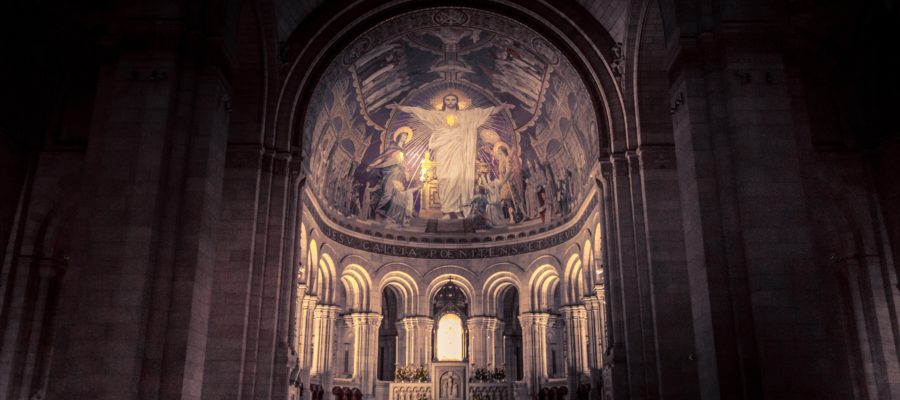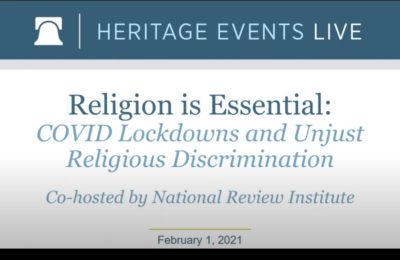Who was Caryll Houselander, and why was she called ‘a divine eccentric’?
October 1, 2019 | Published first in Simply Catholic
Caryll Houselander was well-known for both her wit and her wisdom. A chain-smoking, daily Mass-going, zany redhead, Houselander loved to play practical jokes and hated what she called “common sense Christians.” Her writings contain the depth and insight of a theologian, although she had no formal theological training. Her artwork, children’s stories, and letters provided inspiration, guidance and comfort to a generation of English Catholics during and after the two World Wars.
Houselander had a fascinating life, not least of which included a variety of mystical experiences throughout her life, beginning at an early age. She died at only 53 of breast cancer and even had fallen in love with a Russian spy who broke her heart.
Born Sept. 29, 1901, Houselander was the second child of an English Anglican family. Her mother, Gertrude, was influenced by devout Catholic neighbors and converted to Catholicism, along with her two daughters, when Houselander was six. This is the reason for the humorous title of one of her books, “A Rocking Horse Catholic” – a phrase she used to explain the age of her entry into the Church: “I’m not a cradle Catholic, I’m a ‘rocking horse’ Catholic!”
Marked by mystical experiences
At age 9, Houselander and her sister, Ruth, were sent to a boarding school, as was the custom in Britain. The Convent of the Holy Child was run by a community of French religious women, and it was there that Houselander had the first of the mystical experiences that were to define her life and spirituality.
Among the sisters at the school, there was one German nun who spoke very little English and who was isolated from family and friends after World War I began. Houselander recalled coming upon her one day as she was polishing shoes. Tears running down her face, Houselander noticed her hands “were folded in a way that expressed inconsolable grief.”
She continued, “We were both quite silent and I stare down at her beautiful hands, afraid to look up and then – I saw – the nun crowned with the Crown of Thorns. I shall not attempt to explain this. I am simply telling the thing as I saw it. That bowed head was weighed under the Crown of Thorns.”
“I stood for – I suppose – a few seconds, dumbfounded and then, finding my tongue, I said to her, ‘I would not cry, if I was wearing the crown of thorns, like you are.’ She looked at me as if she were startled, and asked, ‘What do you mean?’ ‘I don’t know,’ I said, and at the time I did not. I sat down beside her and together we polished the shoes,” Houselander recounted.
Illness required Houselander to leave boarding school a short time later. Due to a variety of anti-Catholic sentiments suffered by her family, Houselander looked for another spiritual home. She broke from the Catholic Church in her late teens, exploring a variety of religious traditions, including the Salvation Army, the Wesleyan Methodists, Buddhism, and finally, the Russian Orthodox Church, which most deeply captured her interest.
At this point, Houselander experienced the second of her mystical experiences – a prophetic vision of the execution of Tsar Nicholas Romanoff and his family. She had been sent to the store to buy potatoes, and looking in the sky above, she suddenly beheld an image of Christ, crowned as King, yet crucified. Houselander could not understand the meaning of this vision until she later saw the newspaper.
She wrote, “I do not know how soon after that the news of the assassination of the Tsar was published. I only know that when I went out again and saw, at the same street corner where I had seen the crucified king, a newspaper that I knew the meaning of what I had seen more vividly. For the Tsar in the newspaper photo was the face of my Christ the King, but without His glory. While I stood in my London street on my way to buy potatoes, a King in Russia had died Christ’s death. I became instantly aware of the sacrilege involved in murdering an anointed King.”
‘Seeing Christ in all people’
The third of Houselander’s mystical experiences perhaps impacted her the most and helped her to fully develop her spirituality of “seeing Christ in all people.” She explained, “It was not seeing Christ in one person, like with the Bavarian nun,” she noted. “Or in one particular sort of person, like with the icon of Christ the King. This time, it was Christ in all men.”
Houselander recalled traveling from work on an underground train with every manner of man headed home from the day’s work, writing: “Quite suddenly, I saw with my mind, but as vividly as a wonderful picture, Christ in them all. But I saw more than that; not only was Christ in every one of them, living in them, dying in them, rejoicing in them, sorrowing in them – but because he was in them, and because they were here, the whole world was here in this underground train, not only the world as it was at that moment, not only at the people in the countries of the world, but all those yet to come. I came out into the street and walked for a long time in the crowds. It was the same here, on every side, in every passerby – Christ.”
This vision lasted for several days. Houselander wrote to a friend that, while her extraordinary experience had not prevented her from ever sinning again, it “did show me what sin IS, especially those sins done in the name of ‘love’ and thought to be ‘harmless’ – for to sin against a person was to harm Christ, to spit on him.”
Houselander returned to the Catholic Church at age 25 and continued to work as an artist, while writing books (“The Reed of God,” and “The War is the Passion”) and providing spiritual direction and counseling. She was especially gifted in working with those suffering from emotional wounds. Priests would send Houselander their most difficult cases, as would local doctors. Despite her lack of formal training, she was able to heal deeply troubled people. “She loved them back to health,” said noted English psychiatrist Eric Strauss.
Serving God with joy
Houselander’s death from breast cancer came on Oct. 12, 1954. Her life had been one defined in many ways by suffering. But serving God with good humor became her hallmark.
When asked how one could best make a contribution to the good of others, Houselander replied, “I truly believe that the best way to benefit humanity is to make faces in the bus – slightly mad faces, or puttings out of the tongue suddenly at the person opposite. Think of the thrill that gives to countless uneventful lives to whom nothing ever happens! Then they can tell everyone for weeks that they saw a mad woman on the bus, and they can exaggerate this to almost any extent. This form of charity can even be practiced on the way to work.”



